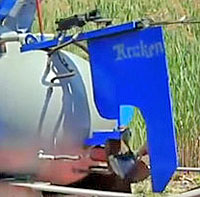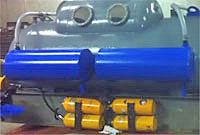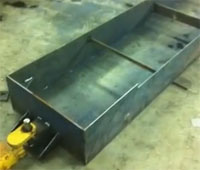We have covered quite a number of amazing DIY projects on our blog. However, this one probably tops all of them. A trio of American farmers based in Kentucky made use of recycled LPG storage tanks to build a submarine. They have named it Kraken and it has successfully traveled a distance of 10 meters below the water surface.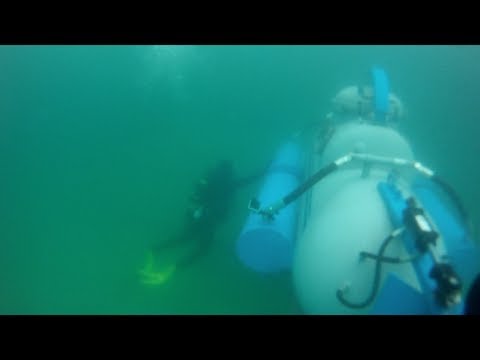
Two huge recycled LPG storage tanks have been used to create the main structure of Kraken. One of the two is smaller when compared with the other tank. The larger tank constitutes the main body of this vehicle while the smaller tank has been welded on to the main tank in order to come up with a superstructure that will sport headroom for the users.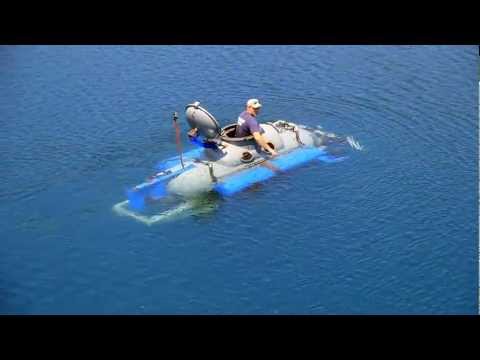
The main tank has been further welded to two big steel I-beams. These I-beams also double up as the framework of submarine while also lets other components fix to it. The submarine is powered via battery which cranks up the hydraulic pump. The hydraulic system powers the propeller and is also in charge of the rudder along with diving planes. In pictures you can see the black propeller located just under the rudder. Hydraulic cylinders are used to operate the control surfaces. You can spot, at the top of rudder, a black cylinder used to control the rudder (blue).
To maintain a neutral buoyancy, a submarine needs a heavy keel, thus allowing it to dive under water. LPG tank structure also known as submarine in this particular case would simply be bobbing up and down like a cork due to the trapped air inside it. The team came up with a low cost method; they fabricated a concrete filled steel tray and then welded it between the pair of I-beams at the bottom of craft. The keel is crucial in keeping the submarine upright.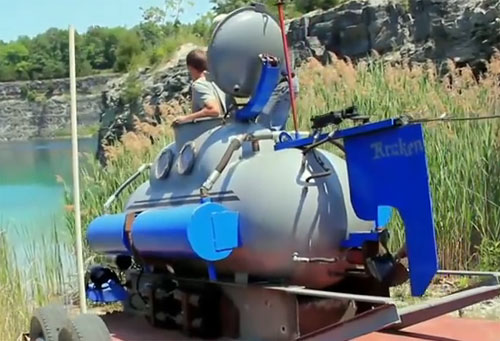
For the submarine to be able to submerge, it has ballast tanks (blue) that can be flooded with water, increasing weight and changing buoyancy to negative causing the submarine to sink. This motion can be controlled. Kraken uses cylinders with compressed air to reverse this process so that it can come back to surface again. These cylinders are fixed just below the ballast tanks and are responsible for forcing the water out of tanks by allowing air to fill up in the tank.
The submarine’s pitch is controlled by twin diving planes affixed to the boat’s front. These planes are also responsible to maintain the depth, diving motion and surfacing of the submarine. It has a hatch and windows to allow the user to see where it is headed and also allow the user to enter and exit the submarine. The hatch opens upwards, saving space. The submarine has a total of 6 windows.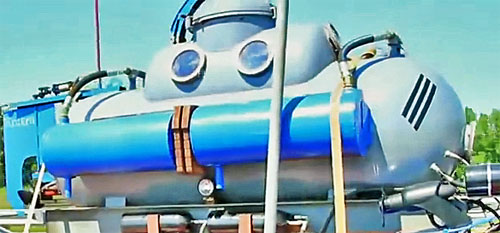
When the structure achieved completion, primer was used followed by final paint application. The founders opted for a grey body along with blue ballast tanks and control surfaces whereas the compressed air cylinders were black in colour.
Let us know what do you think of the submarine that has been created by these farmers.


